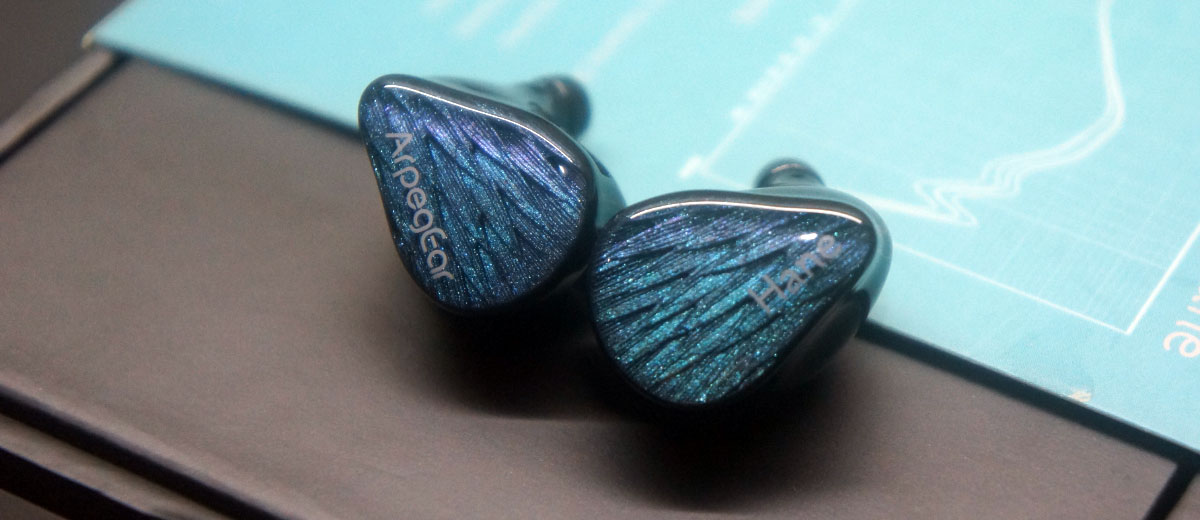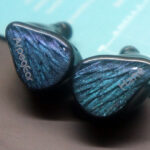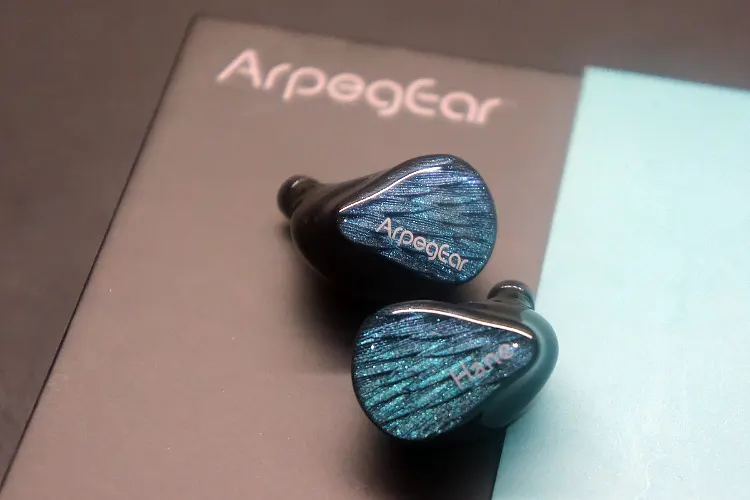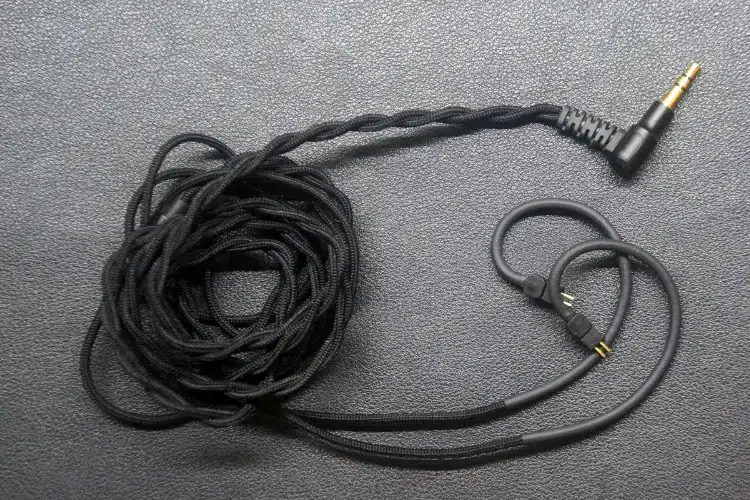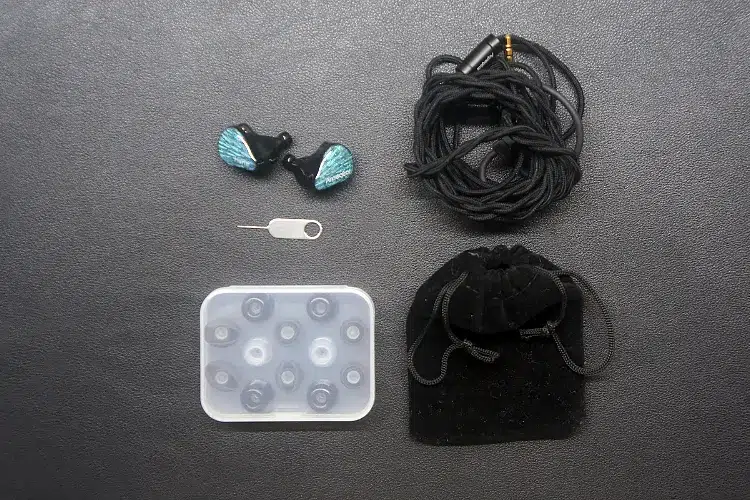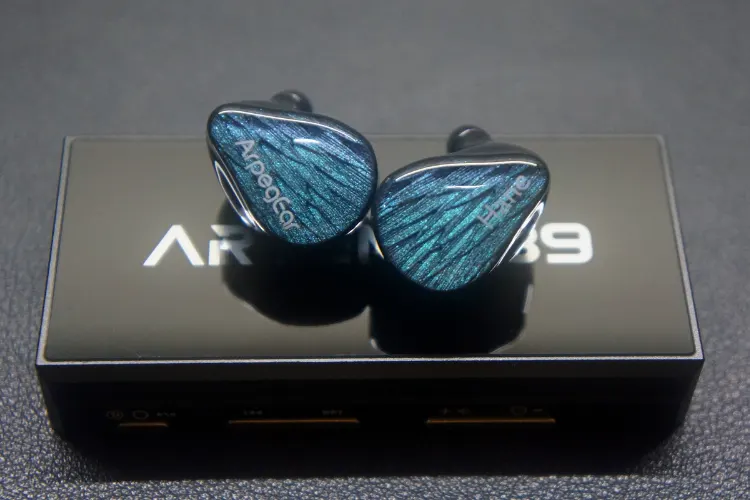Meldrick reviews the Topping Arpegear Hane, the company’s first dynamic driver IEM featuring a 4-position dip switch for multiple tuning options. It is currently priced at $129.00.
Disclaimer: This sample unit was sent to me in exchange for our honest opinion. Headfonics is an independent website with no affiliate links or status. I thank the team at Shenzhen Audio and Topping for their support.
Click here to read more about Topping products previously reviewed on Headfonics.
This article follows our current scoring guidelines, which you can read here.
Topping Arpegear, a new subsidiary of Topping, recently entered the hyper-competitive IEM market with the Hane, an affordable single dynamic driver IEM with 4 tuning switches and up to 16 unique tuning profiles.
Primarily known for their DACs and AMPs, such as the high-end DX9, Topping is no stranger to delivering great Hi-Fi, but are they able to translate their expertise to an IEM release?
And how does it fare against established IEMs such as the LETSHUOER S08 and SIMGOT’s EA500LM? I found out in my full review below.
Features
The Hane’s claim to fame is its four independent Precision Tone Control (PTC) dip switches, allowing users to select from 16 distinct tuning combinations. This customization enables tailored sound profiles to suit individual preferences and various music genres.
Topping Arpegear claims that the 10mm DLC dynamic driver in the Hane enhances high-frequency details and dynamic range, delivering precise and accurate sound reproduction with a reported total harmonic distortion under 0.05%.
Drawing from traditional Chinese “dian cui” techniques, the Hane’s faceplate showcases a feather-inspired design that captures light and shadow, adding an artistic and elegant touch to its appearance.
Design
Like many Chi-Fi IEMs in its price range, the Topping Arpegear Hane features a seamless 3D-printed shell made from medical-grade resin. The shell has a deep, high-gloss finish that, while elegant, is highly prone to fingerprints; even a brief touch leaves visible smudges.
Simply inserting the IEMs into my ears immediately highlighted finger oils on the surface. The main body is completely blacked out, giving it a sleek and understated aesthetic.
On the rear of the shell, a small tuning vent sits just beneath the integrated resin nozzle. Moving towards the right side, the Hane’s four tuning switches come into view, allowing users to cycle through its 16 different sound profiles.
Despite its seamless one-piece construction with no visible joins between the body and faceplate, the Hane’s front panel showcases an intricate feather-like pattern.
Inspired by the traditional Chinese “dian cui” technique, this design shifts in appearance as light catches different angles, creating a jewel-like effect. The faceplate is encased within the resin shell, enhancing its durability and resistance to daily wear.
The Hane is easily one of the most visually striking IEMs I’ve encountered at any price point. While the faceplate design is a standout feature, its subtle color palette ensures that it remains sophisticated, drawing attention only when closely examined.
Comfort & Isolation
The Hane provides a moderate level of comfort despite its compact size. Its main drawback lies in the lack of pronounced ergonomic curves or contours that naturally conform to the shape of the ear.
While the fit is secure, the shell’s design results in a slight overhang, making it fit less seamlessly than more contoured IEMs. That said, I didn’t experience any significant discomfort or fatigue, even during extended listening sessions.
With properly sized ear tips, the Hane offers respectable passive noise isolation, effectively blocking out external noise despite its vented shell. The venting also helps reduce pressure buildup, which contributes to overall comfort, particularly during long listening periods.
Overall, Hane’s comfort level is adequate but not class-leading. It doesn’t quite reach the ergonomic refinement of models like the Open Audio Witch Pro, but it remains more comfortable than bulkier IEMs like the Yanyin Canon II.
Stock Cable
The stock cable of the Topping Arpegear Hane features a 4-core oxygen-free copper construction, terminating in a 3.5mm single-ended plug and a standard 0.78mm 2-pin connector.
The cable is wrapped around a black braided material that prevents tangles and remains lightweight and functional enough for everyday use. The plug is gold-plated, encased in a 90-degree rubber connector with a long rubber strain relief that goes quite far into the cable.
Unfortunately, I found that the cable exhibits quite a bit of microphonics in both on-the-go and desk usage. It isn’t enough to be a total breaker, but it was quite disappointing to see, since most Chi-Fi manufacturers have already solved microphonics-related problems.
Packaging & Accessories
The Hane’s packaging is compact and tastefully designed, with a teal Topping Arpegear sleeve wrapping around the main black box. Flipping around the sleeve shows detailed specifications, as well as measurement graphs showing off the different tuning profiles.
Inside the box, you’ll find:
- Hane IEMs
- 6x Silicone vented ear tips (S/M/L)
- 1xstock cable
- 1x Carrying Pouch
- 1xTuning
The accessories included are not particularly competitive, especially considering that some more affordable IEMs now come with 4.4mm modular cables. However, they are sufficient for most users to get started without any major inconveniences.
Sound Impressions
The following sound impressions of the Hane were completed using a mix of the ddHiFi TC35Pro E2, 7Hz Artemis39, iFi audio GO link Max, and the FiiO K11.
Tuning Profiles
The Topping Arpegear Hane’s Precision Tone Control (PTC) dip switch system features four independent switches, enabling up to 16 unique tuning combinations. This system allows users to tailor the IEM’s sound signature to their preferences by adjusting specific frequency ranges.
Toggling each switch has a distinct impact on the audio profile:
- Switch 1: 2 dB Bass Boost
- Switch 2: 4 dB Bass Boost
- Switch 3: Treble attenuation
- Switch 4: Treble Boost.
These switches can be activated in different combinations to yield different effects. Toggling both switches 1 and 2 creates a 6 dB bass boost that is more than enough to satisfy bass heads, but it does muddy up the mids and treble quite a bit.
On the other hand, toggling both switches 3 and 4 yields a narrower attenuation range between 3- 7 kHz, which gives music a slightly more organic sound signature without sacrificing too much detail.
Throughout my testing, I found my preferred tuning to be with switches 3 and 4 toggled up. Unless otherwise mentioned, all impressions and comparisons were done with the Hane in this tuning setting.
I found that toggling either switch 1 or 2 gave tracks a blunted bass presentation that didn’t translate into the sub-bass slam or mid-bass warmth I was looking for.
I found myself having to increase the volume of the IEMs when either of the 2 bass switches was toggled, since I found that it would lower the overall volume.
After prolonged listening with Switch 1 on, I felt like pressure was building up in my ear. I quickly toggled the switch off, and it resulted in the music immediately sounding wider, cleaner, and better separated.
Bass
With all switches off, the Hane has a noticeably bass-light presentation, even compared to neutral IEMs like the Moondrop Blessing 3. The low end lacks impact, with thin mid-bass and only a faint sub-bass presence that provides minimal rhythmic support.
Enabling the bass boost switches (1 and 2) slightly increases bass quantity but comes at a cost, making the IEM harder to drive, compressing the overall sound, narrowing the soundstage, and worsening imaging.
Additionally, the boost introduces a sense of pressure that can feel uncomfortable. Despite these trade-offs, the enhancements fail to significantly improve punch, slam, or warmth in the mid-bass, leaving the low end lacking in weight and tactility.
At my preferred tuning profile with Switches 3 and 4 toggled on, the bass region is similarly light, only making its sub-bass presence felt in hip-hop tracks, pop tracks, or acoustic traps with boosted kick drums driving the rhythm.
The bass response of the Hane never steals the show, having the tendency to sound one-dimensional. However, with none of the bass switches toggled, this gives it a clean presentation that adds to the well-resolving and organic-sounding midrange.
Mids
The Hane’s midrange is a highlight, particularly for string instruments, which exhibit excellent harmonics and resolution.
With the bass switched off, the presentation remains clean and articulate, allowing individual guitar plucks and strums in balladic tracks to reverberate naturally with impressive texture and realism.
With switches 3 and 4 toggled on, female vocals shine with impressive energy and clarity, especially in stripped-back arrangements where they take center stage alongside string instruments.
In female-led balladic pop music, I found myself appreciating vocal performances more compared to my usual suite of neutral to warm IEMs and headphones.
However, while the Hane excels in microdetail retrieval, it lacks the note weight and warmth of more mid-centric or warmer IEMs, resulting in a presentation where textures and overtones stand out more than the physical impact of each note.
Male vocals, on the other hand, sound slightly recessed due to the leaner tuning in the bass and lower mids, making them less prominent in the mix.
This disparity between male and female-led tracks may limit the versatility of the Hane to some, but its superior presentation of mid-range string instruments is usually enough to carry most tracks.
Treble
Activating switches 3 and 4 enhances the Hane’s treble resolution and harmonic detail without introducing excessive sibilance. The Hane excels in microdetail retrieval, surpassing many competitors in its price range while maintaining a midrange that sounds both detailed and natural.
This tuning elevates the overall sound signature, creating an airy and expansive soundstage. Cymbal hits are well-separated and positioned naturally, adding complexity and depth to the mix, though they can sometimes verge on sibilance, particularly in poorly mastered tracks.
In well-produced recordings, however, they showcase impressive microdetail. Snare drums have a sharp, energetic tonality that adds liveliness without becoming harsh, further contributing to the IEM’s engaging and layered presentation.
This treble refinement particularly stands out in Jazz-Funk fusion tracks, where piercing high-end synths are rendered with excellent articulation.
The Hane’s strong imaging capabilities allow these elements to shine without disrupting the coherence of the overall mix, ensuring an immersive and well-balanced listening experience.
Imaging
The Hane excels in imaging and instrument separation, allowing for precise placement of sounds within the soundstage and delivering individual notes with impressive clarity.
This becomes apparent in complex acoustic music with multiple layers of string instruments and cymbals coming together into a cohesive track wherein each instrument can still be easily isolated.
Among IEMs in its price range, its ability to render detail and position each instrument distinctly within the mix is particularly commendable.
While its soundstage is moderately wide rather than fully immersive, it still provides an engaging and well-layered listening experience, especially for more intricate compositions.
Click on page 2 below for my recommended pairings and selected comparisons.




